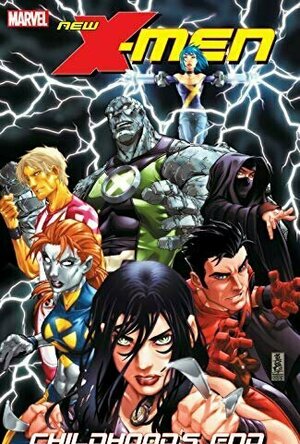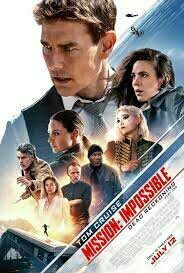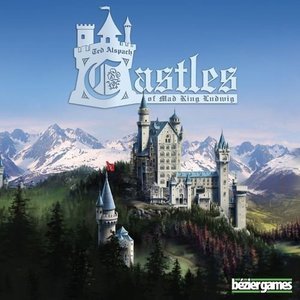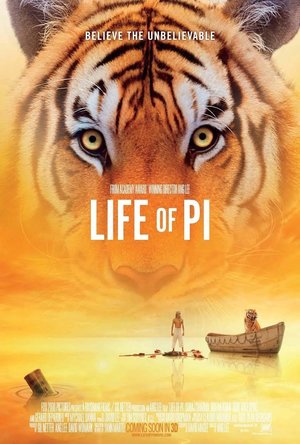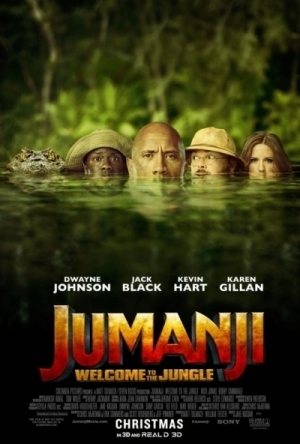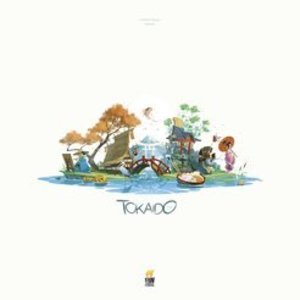Search

Mushrooms LITE
Reference and Book
App
The ultimate mushroom field guide for your pocket! +++ 300 species - 2000 images - 2...
Joe Goodhart (27 KP) rated New X-Men: Childhood's End, Volume 1 in Books
Nov 30, 2020
In an era where Marvel tries to oversaturate the comics market with event after event, and renumbering, along with the line between heroes and villains blurred so much it is draining (and not just my account!).
..which brings my attention backwards, to 2006's NEW X-MEN: CHILDHOOD'S END.
I skipped out when the series first launched as NEW X-MEN: ACADEMY X. It seemed generic and the stories I flipped through did nothing to grab my attention. It wasn't until the rebranding of the series as NEW X-MEN: CHILDHOOD'S END, with Craig Kyle and Christopher Yost taking over the writing as well providng a new revolving artist lineup.
While this first volume was a bit hard to follow, what with the jumping back forth with flashbacks and time rollbacks, but the second reading made more sense. I don't know that I would have written it out that way, but then again, it wasn't my book.
One of the things that really clicked for me was having Kyle and Yost on board. As the creators of Laura Kinney (X-23), I thought her introduction to the team would be handled well. Let's just say I was left feeling quite good, enough so that I will be reading the remaining volumes in the series.
The way she is written is as a lost girl. Logan wants her on the team, as it will help her to integrate, learn more about non-violent interaction. She is resistant at first mention, but then she comes around. However, despite her joining the New X-Men class, it is not an easy ride as she is withdrawn, though we do see the first sparks of interest on her part in Hellion. Unfortunately, her fellow classmates don't make it that easy for her to want to interaction, opting to go the route that most new students are treated in RL. So yeah, makes sense.
The only thing I didn't really like was Laura was referred to as either X-23 or Laura X, instead of Laura Kinney. I am not sure why that was, but as much I found it disappointing, it did not detract the story any. More often that not, when it came up in a panel, I would just read as "Laura" (minus the "X") or Laura Kinney. Easy fix, eh?
The art chores of the first volume went to Mark Brooks. I usually like his art, but sometimes (like in X-FORCE) he would give Laura a bust line not befitting a character like that. Here, though, everything was perfect, aiding in setting the darker "M-Day" and post-"M-Day" mood. I quite liked it, suited the content 100%.
Last thing I want to add is this: WOW! EMMA FROST IS A MEGA SALTY BITCH! Her treatment of Laura was totally uncalled for and way off base. Heck, she used to be the White Queen, yet she is now an X-Men. Everyone deserves a chance, even a former assassin (well, in fairness, it was how she was raised/trained, she really knew nothing else).
So, and including bitchy Emma, I give X-MEN: CHILDHOOD'S END VOL ! 5 out 5 SNIKTs! Not bad! Now, onto Volume Two...
..which brings my attention backwards, to 2006's NEW X-MEN: CHILDHOOD'S END.
I skipped out when the series first launched as NEW X-MEN: ACADEMY X. It seemed generic and the stories I flipped through did nothing to grab my attention. It wasn't until the rebranding of the series as NEW X-MEN: CHILDHOOD'S END, with Craig Kyle and Christopher Yost taking over the writing as well providng a new revolving artist lineup.
While this first volume was a bit hard to follow, what with the jumping back forth with flashbacks and time rollbacks, but the second reading made more sense. I don't know that I would have written it out that way, but then again, it wasn't my book.
One of the things that really clicked for me was having Kyle and Yost on board. As the creators of Laura Kinney (X-23), I thought her introduction to the team would be handled well. Let's just say I was left feeling quite good, enough so that I will be reading the remaining volumes in the series.
The way she is written is as a lost girl. Logan wants her on the team, as it will help her to integrate, learn more about non-violent interaction. She is resistant at first mention, but then she comes around. However, despite her joining the New X-Men class, it is not an easy ride as she is withdrawn, though we do see the first sparks of interest on her part in Hellion. Unfortunately, her fellow classmates don't make it that easy for her to want to interaction, opting to go the route that most new students are treated in RL. So yeah, makes sense.
The only thing I didn't really like was Laura was referred to as either X-23 or Laura X, instead of Laura Kinney. I am not sure why that was, but as much I found it disappointing, it did not detract the story any. More often that not, when it came up in a panel, I would just read as "Laura" (minus the "X") or Laura Kinney. Easy fix, eh?
The art chores of the first volume went to Mark Brooks. I usually like his art, but sometimes (like in X-FORCE) he would give Laura a bust line not befitting a character like that. Here, though, everything was perfect, aiding in setting the darker "M-Day" and post-"M-Day" mood. I quite liked it, suited the content 100%.
Last thing I want to add is this: WOW! EMMA FROST IS A MEGA SALTY BITCH! Her treatment of Laura was totally uncalled for and way off base. Heck, she used to be the White Queen, yet she is now an X-Men. Everyone deserves a chance, even a former assassin (well, in fairness, it was how she was raised/trained, she really knew nothing else).
So, and including bitchy Emma, I give X-MEN: CHILDHOOD'S END VOL ! 5 out 5 SNIKTs! Not bad! Now, onto Volume Two...

Mushrooms PRO Hunting Safely
Reference and Book
App
+++ 300 species - 2000 images - 2 identification functions - Quiz - GPS / notes +++ +++ ONLINE...
BankofMarquis (1832 KP) rated Mission impossible dead reckoning part one (2023) in Movies
Jul 14, 2023
What A Summer Blockbuster Movie Should Be
Boy, that Tom Cruise sure knows how to make a crowd-pleasing, summer blockbuster movie.
Fresh off his cinema-saving success with TOP GUN: MAVERICK, Cruise (and Director Christopher McQuarrie) comes back with another giant summer tentpole film - MISSION IMPOSSIBLE: DEAD RECKONING, PART ONE - and they hit it out of the park again.
The 7th film in the Mission Impossible franchise (which debuted, incredibly, 27 years ago), DEAD RECKONING, PART ONE reunites Ethan Hunt (Tom Cruise) with his band of hero/outlaws to stop yet another world-wide crisis. It’s familiar ground but it is the journey not the destination that makes these types of films work and the journey (which, to be honest, is just an excuse to jump from action set piece to action set piece) is a fun one filled with comfortable characters/actors both old and new.
Besides Cruise (who’s got the Ethan Hunt character down), DR1 is filled with Hunt’s “regular” crew, Luther (Vingh Rhames - the only other actor besides Cruise to be in every MI film), Benji (SImon Pegg - around since MI 3) and Ilsa Faust (Rebecca Ferguson - on board since film 5). These are all familiar, comfortable characters and when the band gets back together about 1/2 way through the film, it felt liking sinking into your couch after a long, hard (but good) day of work to watch your favorite comfort show.
McQuarrie, wisely, populates the rest of the film with new, but comfortably familiar, faces such as Haley Atwell (Agent Carter in the MCU), Shea Wigham (ironically, he played Atwell’s boss in the Agent Carter TV Series), Pom Klementieff as Paris (the name of the character Leonard Nimoy played in the TV Series). Klementieff is also a veteran of the MCU having played Mantis in the Guardians of the Galaxy films, Esai Morales (one of the bosses in NYPD BLUE) and Cary Elwes (the Princess Bride). All bring their “A” game to the adventure and all of them acquit themselves just fine.
Oh…and Henry Czerny reprises his role as Kittridge from the first Mission Impossible film - and it was good to see him, too as was Vanessa Kirby’s re-appearance as Hunt’s “frenemie”, The White Widow (in a role that is a bit more expanded).
But, of course, all of these actors/performances takes a back seat to the action sequences and McQuarrie and Cruise are at the top of their game here. The big action set pieces are a marvel to watch - very enjoyable, exciting, nerve-wracking and easy to follow with some sense of humor rolled in. Unlike another big action flick (that leaned more towards the over-the-top comic-book type action), this Mission Impossible film relies on tension to make these action scenes pop off the screen - and McQuarrie succeeds.
Since this film is labeled as “Part One” you would expect to this film to end on a cliff-hanger and McQuarrie/Cruise were smart about that, too. It is more of “the mission isn’t finished” than a cliff-hanger, which helps this film hold together on it’s own and not just “Part One of a two-parter”.
Very smart, indeed.
A fun romp at the cinema - head out to the biggest screen possible to immerse yourself into this mission, you’ll be glad you did.
Letter Grade: A
9 stars (out of 10) and you can take that to the Bank(ofMarquis)
A fun, escapist, action film that is satisfying (and not dumb), MISSION IMPOSSIBLE: DEAD
Fresh off his cinema-saving success with TOP GUN: MAVERICK, Cruise (and Director Christopher McQuarrie) comes back with another giant summer tentpole film - MISSION IMPOSSIBLE: DEAD RECKONING, PART ONE - and they hit it out of the park again.
The 7th film in the Mission Impossible franchise (which debuted, incredibly, 27 years ago), DEAD RECKONING, PART ONE reunites Ethan Hunt (Tom Cruise) with his band of hero/outlaws to stop yet another world-wide crisis. It’s familiar ground but it is the journey not the destination that makes these types of films work and the journey (which, to be honest, is just an excuse to jump from action set piece to action set piece) is a fun one filled with comfortable characters/actors both old and new.
Besides Cruise (who’s got the Ethan Hunt character down), DR1 is filled with Hunt’s “regular” crew, Luther (Vingh Rhames - the only other actor besides Cruise to be in every MI film), Benji (SImon Pegg - around since MI 3) and Ilsa Faust (Rebecca Ferguson - on board since film 5). These are all familiar, comfortable characters and when the band gets back together about 1/2 way through the film, it felt liking sinking into your couch after a long, hard (but good) day of work to watch your favorite comfort show.
McQuarrie, wisely, populates the rest of the film with new, but comfortably familiar, faces such as Haley Atwell (Agent Carter in the MCU), Shea Wigham (ironically, he played Atwell’s boss in the Agent Carter TV Series), Pom Klementieff as Paris (the name of the character Leonard Nimoy played in the TV Series). Klementieff is also a veteran of the MCU having played Mantis in the Guardians of the Galaxy films, Esai Morales (one of the bosses in NYPD BLUE) and Cary Elwes (the Princess Bride). All bring their “A” game to the adventure and all of them acquit themselves just fine.
Oh…and Henry Czerny reprises his role as Kittridge from the first Mission Impossible film - and it was good to see him, too as was Vanessa Kirby’s re-appearance as Hunt’s “frenemie”, The White Widow (in a role that is a bit more expanded).
But, of course, all of these actors/performances takes a back seat to the action sequences and McQuarrie and Cruise are at the top of their game here. The big action set pieces are a marvel to watch - very enjoyable, exciting, nerve-wracking and easy to follow with some sense of humor rolled in. Unlike another big action flick (that leaned more towards the over-the-top comic-book type action), this Mission Impossible film relies on tension to make these action scenes pop off the screen - and McQuarrie succeeds.
Since this film is labeled as “Part One” you would expect to this film to end on a cliff-hanger and McQuarrie/Cruise were smart about that, too. It is more of “the mission isn’t finished” than a cliff-hanger, which helps this film hold together on it’s own and not just “Part One of a two-parter”.
Very smart, indeed.
A fun romp at the cinema - head out to the biggest screen possible to immerse yourself into this mission, you’ll be glad you did.
Letter Grade: A
9 stars (out of 10) and you can take that to the Bank(ofMarquis)
A fun, escapist, action film that is satisfying (and not dumb), MISSION IMPOSSIBLE: DEAD
Purple Phoenix Games (2266 KP) rated Castles of Mad King Ludwig in Tabletop Games
Jun 12, 2020
“Well why CAN’T I just have a long hallway between my garden and my porch? How else am I going to get to the stairwell?” – Nobody ever.
Castles of Mad King Ludwig is a game of castle construction in the most ridiculous fashion. Oh, there ARE rules, mind you, but what results can be a ludicrous display of asinine architectural planning but also hilarity at what monstrosity you have assembled.
DISCLAIMER: I do not intend to cover every single rule included in the rule book, but will describe the overall game flow and major rule set so that our readers may get a sense of how the game plays. For more in depth rules, you may purchase a copy from the publisher directly or from your FLGS. Also there is an expansion to this game, but we are not reviewing it at this time. Should we review it in the future we will either update this review or post a link to the new material here. -T
Ok, stop ranting about how stupid your castles always look at game’s end. In this game you are building a castle for an eccentric (and mad) king to appease his skewed vision of stylish housing. Setup is somewhat lengthy, so I will not detail all the steps here. Determine the starting player and give them the castleeple (grr) to denote them as the first Master Builder. As Master Builder, you will draw room tile cards that dictate from which size pile you will draw room tiles. The Master Builder will then assign each room tile a cost and place the tile next to the cost for all to see. Each player will then choose a room tile to add to their castle and pay the Master Builder the cost (or choose a corridor). The Master Builder will then choose their room tile and pay the bank the cost. For every room tile that did not get chosen a coin will be placed on it as consolation for whomever purchases it in the future.
Once you have placed your room tile you score the points printed on the room, add or subtract any bonus points for placing near other specific rooms, and check for room completion. If you have connected all entryways from a room to different rooms or corridors you may receive the benefits of room completion printed on a separate completion bonus tile. These bonuses could range from re-scoring the room, drawing extra bonus cards, or even receiving room tiles for free.
Game play continues this way until the room tile cards run out. Players take note of their position on the scoring tableau and count up any bonus cards they have completed as well as placement in the face-up public goals. Score any bonus points for leftover money and allow the winner to gloat and show off their preposterous castle… thing.
Components. There are quite a lot of components for this game. You are definitely getting your money’s worth here. The cards are of good quality. The room tiles, bonus tokens, scoring tableau, coins, and main organization board are thinner stock cardboard, but they have held up really well for me. The castleeple and scoring discs are nice, and the rule book is concise and easy to read and comprehend. The artwork is nice, and the whole package it put together really well. Ok, so I honestly don’t remember what the insert looks like because I tossed it right away, but I’m sure it was fine too?
So I gave this one some crap at the top of the review for being mostly ridiculous. And it is. But, I also really really like this game. It allows me to contrive a strategy and tactics as I play, and I feel great about what I have done by the end of the game. I did not really care for Suburbia when I played it, and though this is not a copy, it is similar. Why do I like this one so much but not the other? I really do not know. The art is way better on Castles, but surely that can’t be enough to overpower the game play right? Is it the Master Builder feature? It is the different sized and shaped room tiles that allow me to make a monster on the table in front of me? Must be all of these things. As you can see, I am not alone in my enjoyment of the game as Purple Phoenix Games gives this one an absurd 15 / 18. Get this one for all your architect aficionado friends.
Castles of Mad King Ludwig is a game of castle construction in the most ridiculous fashion. Oh, there ARE rules, mind you, but what results can be a ludicrous display of asinine architectural planning but also hilarity at what monstrosity you have assembled.
DISCLAIMER: I do not intend to cover every single rule included in the rule book, but will describe the overall game flow and major rule set so that our readers may get a sense of how the game plays. For more in depth rules, you may purchase a copy from the publisher directly or from your FLGS. Also there is an expansion to this game, but we are not reviewing it at this time. Should we review it in the future we will either update this review or post a link to the new material here. -T
Ok, stop ranting about how stupid your castles always look at game’s end. In this game you are building a castle for an eccentric (and mad) king to appease his skewed vision of stylish housing. Setup is somewhat lengthy, so I will not detail all the steps here. Determine the starting player and give them the castleeple (grr) to denote them as the first Master Builder. As Master Builder, you will draw room tile cards that dictate from which size pile you will draw room tiles. The Master Builder will then assign each room tile a cost and place the tile next to the cost for all to see. Each player will then choose a room tile to add to their castle and pay the Master Builder the cost (or choose a corridor). The Master Builder will then choose their room tile and pay the bank the cost. For every room tile that did not get chosen a coin will be placed on it as consolation for whomever purchases it in the future.
Once you have placed your room tile you score the points printed on the room, add or subtract any bonus points for placing near other specific rooms, and check for room completion. If you have connected all entryways from a room to different rooms or corridors you may receive the benefits of room completion printed on a separate completion bonus tile. These bonuses could range from re-scoring the room, drawing extra bonus cards, or even receiving room tiles for free.
Game play continues this way until the room tile cards run out. Players take note of their position on the scoring tableau and count up any bonus cards they have completed as well as placement in the face-up public goals. Score any bonus points for leftover money and allow the winner to gloat and show off their preposterous castle… thing.
Components. There are quite a lot of components for this game. You are definitely getting your money’s worth here. The cards are of good quality. The room tiles, bonus tokens, scoring tableau, coins, and main organization board are thinner stock cardboard, but they have held up really well for me. The castleeple and scoring discs are nice, and the rule book is concise and easy to read and comprehend. The artwork is nice, and the whole package it put together really well. Ok, so I honestly don’t remember what the insert looks like because I tossed it right away, but I’m sure it was fine too?
So I gave this one some crap at the top of the review for being mostly ridiculous. And it is. But, I also really really like this game. It allows me to contrive a strategy and tactics as I play, and I feel great about what I have done by the end of the game. I did not really care for Suburbia when I played it, and though this is not a copy, it is similar. Why do I like this one so much but not the other? I really do not know. The art is way better on Castles, but surely that can’t be enough to overpower the game play right? Is it the Master Builder feature? It is the different sized and shaped room tiles that allow me to make a monster on the table in front of me? Must be all of these things. As you can see, I am not alone in my enjoyment of the game as Purple Phoenix Games gives this one an absurd 15 / 18. Get this one for all your architect aficionado friends.
Movie Metropolis (309 KP) rated Life Of Pi (2012) in Movies
Jun 10, 2019 (Updated Jun 10, 2019)
Ang Lee has directed some very artistic and emotionally charged films in his career and his new movie, Life of Pi is certainly no exception. But can his take on Yann Martel’s 2001 novel of the same name live up to his usual high standards?
In short, the answer is a resounding yes. From the stunning special effects and beautiful acting to the heart-warming story, it captivates from beginning to end like no other film released this year.
The film begins with a pet hate of mine, the credits. I always think a movie that starts with its credits is usually a huge let-down but something was different here, as soon as the brilliantly filmed names flash across the screen, I knew this film was going to be spectacular, just how spectacular however, I was not prepared for.
The story is, essentially what the title says it is, the life of a boy called Pi and his extraordinary journey from childhood, through adolescence and finally into adulthood. It seems quite simple and perhaps nothing too innovative or different, but the way Lee has captured the magic of the novel really does shine through on screen.
In the present day, Rafe Spall plays a budding writer searching for inspiration for his next big book. He comes across Irrfan Khan who plays the adult Pi and has an unbelievable story to tell. So, as he begins to narrate this incredible journey, the viewer is transported to when Pi was a boy.
It’s true that the film takes a while to get going and the scenes in Pi’s native India are perhaps the most testing of the entire film. The momentum is built up slowly as the boy travels through school life whilst his family run a small zoo in their hometown. Alas, the perfection of his childhood is ruined when his entire family decide to relocate to Canada due to an economic crisis. They are packed onto a tanker with the zoo animals on-board and begin the journey to their new life.
Whilst on the last leg of their journey, their ship is ravaged by a severe storm and Pi’s family is lost, along with most of the zoo animals and, in a scene that even betters the emotionally charged sinking in Titanic and the CGI packed sinking in Poseidon, their tanker is lost to the ocean.
Thankfully he survives, along with an injured zebra, a naughty hyena and a motherly orangutan in a small life-boat. It’s safe to say that the zebra and ape don’t last too long on-board a ship with a hyena and they are picked off as lunch. However, also sailing with them is Richard Parker, a Bengal tiger and he forms the basis of the film, along with Pi. At first, after Richard Parker makes light work of the hyena, the relationship between Pi and his new shipmate is somewhat strained, a constant battle between who is going to eat who and the only sensible option is for Pi to live on separate raft tied to the life-boat.
However, a few days pass and finally they can share a boat, albeit after a couple of amusing scenes involving urine and some flying fish.
Richard Parker is a beautiful animal to say the least, a mixture of live action tigers, CGI animation and animatronics really brings him to life, which is good considering he is the only other character in the film. This is where Ang Lee’s brilliance as a director shines, bringing warmth and heart to a character that is not only not real, but an animal, without the ability to talk and share feelings. Credit must also be given to newcomer Suraj Sharma who plays Pi Patel absolutely brilliantly. I simply could not believe this was his first big acting role; his performance is nothing short of stunning.
Then there are the special effects and 3D. Everything is a wonder to behold and the 3D is a help in enjoying the film, rather than a hindrance which it continues to be in other movies. There are two scenes in particular which really stand out, including a lot of jellyfish and a few thousand meerkats. I won’t say anything else, as they need to be seen to be believed.
Moreover, in the depths of this film lies a huge emotional core, the story of a boy and his ‘pet’ and the perils they face, the togetherness they bring to one another is touching to say the least and let’s just say there were more than a few sniffles coming from the rows behind me in the cinema. However, it is more than just a story of companionship; there is a deep religious message about believing in god even if he seems to not be there 100% of the time. Whether or not you choose to read into this is your decision, but it’s there throughout.
Life of Pi is something really special, a magical journey that needs to be seen to be believed. Very rarely, a film comes along that touches your heart, your soul and your head and this is one of those films. Everything from the performances of all the actors, the beautiful recreation of Richard Parker and stunning special effects make this film as revolutionary as Avatar was in 2009. It is not only the best film of 2012; it is one of the best films ever made. Please, I urge all of you who read this, go see it, and witness history in the making.
https://moviemetropolis.net/2012/12/22/life-of-pi-review-2012/
In short, the answer is a resounding yes. From the stunning special effects and beautiful acting to the heart-warming story, it captivates from beginning to end like no other film released this year.
The film begins with a pet hate of mine, the credits. I always think a movie that starts with its credits is usually a huge let-down but something was different here, as soon as the brilliantly filmed names flash across the screen, I knew this film was going to be spectacular, just how spectacular however, I was not prepared for.
The story is, essentially what the title says it is, the life of a boy called Pi and his extraordinary journey from childhood, through adolescence and finally into adulthood. It seems quite simple and perhaps nothing too innovative or different, but the way Lee has captured the magic of the novel really does shine through on screen.
In the present day, Rafe Spall plays a budding writer searching for inspiration for his next big book. He comes across Irrfan Khan who plays the adult Pi and has an unbelievable story to tell. So, as he begins to narrate this incredible journey, the viewer is transported to when Pi was a boy.
It’s true that the film takes a while to get going and the scenes in Pi’s native India are perhaps the most testing of the entire film. The momentum is built up slowly as the boy travels through school life whilst his family run a small zoo in their hometown. Alas, the perfection of his childhood is ruined when his entire family decide to relocate to Canada due to an economic crisis. They are packed onto a tanker with the zoo animals on-board and begin the journey to their new life.
Whilst on the last leg of their journey, their ship is ravaged by a severe storm and Pi’s family is lost, along with most of the zoo animals and, in a scene that even betters the emotionally charged sinking in Titanic and the CGI packed sinking in Poseidon, their tanker is lost to the ocean.
Thankfully he survives, along with an injured zebra, a naughty hyena and a motherly orangutan in a small life-boat. It’s safe to say that the zebra and ape don’t last too long on-board a ship with a hyena and they are picked off as lunch. However, also sailing with them is Richard Parker, a Bengal tiger and he forms the basis of the film, along with Pi. At first, after Richard Parker makes light work of the hyena, the relationship between Pi and his new shipmate is somewhat strained, a constant battle between who is going to eat who and the only sensible option is for Pi to live on separate raft tied to the life-boat.
However, a few days pass and finally they can share a boat, albeit after a couple of amusing scenes involving urine and some flying fish.
Richard Parker is a beautiful animal to say the least, a mixture of live action tigers, CGI animation and animatronics really brings him to life, which is good considering he is the only other character in the film. This is where Ang Lee’s brilliance as a director shines, bringing warmth and heart to a character that is not only not real, but an animal, without the ability to talk and share feelings. Credit must also be given to newcomer Suraj Sharma who plays Pi Patel absolutely brilliantly. I simply could not believe this was his first big acting role; his performance is nothing short of stunning.
Then there are the special effects and 3D. Everything is a wonder to behold and the 3D is a help in enjoying the film, rather than a hindrance which it continues to be in other movies. There are two scenes in particular which really stand out, including a lot of jellyfish and a few thousand meerkats. I won’t say anything else, as they need to be seen to be believed.
Moreover, in the depths of this film lies a huge emotional core, the story of a boy and his ‘pet’ and the perils they face, the togetherness they bring to one another is touching to say the least and let’s just say there were more than a few sniffles coming from the rows behind me in the cinema. However, it is more than just a story of companionship; there is a deep religious message about believing in god even if he seems to not be there 100% of the time. Whether or not you choose to read into this is your decision, but it’s there throughout.
Life of Pi is something really special, a magical journey that needs to be seen to be believed. Very rarely, a film comes along that touches your heart, your soul and your head and this is one of those films. Everything from the performances of all the actors, the beautiful recreation of Richard Parker and stunning special effects make this film as revolutionary as Avatar was in 2009. It is not only the best film of 2012; it is one of the best films ever made. Please, I urge all of you who read this, go see it, and witness history in the making.
https://moviemetropolis.net/2012/12/22/life-of-pi-review-2012/
Bob Mann (459 KP) rated Jumanji: Welcome to the Jungle (2017) in Movies
Sep 29, 2021
The most fun you can have with Jack Black’s penis.
In 1995, Joe Johnston (“The Rocketeer”, “Captain America: The First Avenger”) directed “Jumanji” – a quirky, fantastical and dark film starring the late, great Robin Williams that got a rough critical reception at the time of release, but was embraced by the public and has gone on to be a modern classic. So when it was announced that a sequel was in the works 22 years later, my first reaction was “Oh no… is nothing sacred?”. It’s fair to say that I went into this flick with extremely low expectations.
But I have to say that – given this low base – I was pleasantly surprised. It’s actually quite a fun fantasy film that I predict that older kids will adore.
Seriously kick-ass. Karen Gillan – or rather one of her stunt doubles – gets hands… er… feet on with an aggressive level-character.
Initially set (neatly) in 1995, a teen – Alex (Nick Jonas, of the Jonas Brothers) unearths the board game Jumanji where it ended up buried in beach-sand at the end of the last film. “Who plays board games any more?” he scoffs, which the game hears and morphs into a game cartridge. Cheesy? Yes, but no more crazy than the goings on of the first film. Back in 2017, four high-school teens – geeky Spencer (Alex Wolff, “Patriot’s Day“); sports-jock Fridge (Ser’Darius Blain); self-obsessed beauty Bethany (Madison Iseman); and self-conscious, nerdy and shy Martha (Morgan Turner) – find the game and are sucked into it, having to complete all the game levels before they can escape.
Bethany (Madison Iseman) wishing she had her phone out for a selfie of this.
But they are not themselves in the game; they adopt the Avatars they chose to play: Dr Bravestone (Dwayne Johnson, “San Andreas“); Moose Finbar (Kevin Hart, “Get Hard“); Ruby Roundhouse (Karen Gillan, “Dr Who”, “The Circle“; “Guardians of the Galaxy“); and Professor Shelly Oberon (Jack Black, “Sex Tape“, “Kong”). Can they combine their respective game talents – and suppress the human mental baggage they brought with them – to escape the game?
Avatars all. Kevin Hart, Dwayne Johnson, Karen Gillan and Jack Black.
There was a really dark time-travelling angle to the storyline of the original film – the traumatic start of Disney’s “Flight of the Navigator” was perhaps also borrowed from the concept in the book by Chris Van Allsburg. An attempt is made to recreate this in the sequel. I felt the first film rather pulled its punches though in favour of a Hollywood happy ending: will this be the case this time?
The film delivers laughs, but in a rather inconsistent fashion – it is mostly smile-worthy rather than laugh-out-loud funny. Much fun is had with the sex change of Bethany’s character, with Jack Black’s member featuring – erm – prominently. The characters all have strengths and weaknesses, like a game of Top Trumps, and this also entertains. But the most humour derives from the “three lives and it’s game over” device giving the opportunity for various grisly ends, often relating to the above referenced weaknesses.
A weakness for cake… something many of us have, but not quite to this extent.
Given the cast that’s been signed up, the acting is not exactly first rate although Karen Gillan shines as the brightest star. But “it’s not bloody Shakespeare” so ham-acting is not that much of a problem and the cast all have fun with their roles. Dwayne Johnson in particular gets to play out of character as the ‘nerd within the hunk’, and his “smouldering look” skill – arched eyebrow and all – is hilarious. Rhys Darby, looking so much like Hugh Jackman that I had to do several double takes, also turns up as an English game-guide in a Land Rover, and Bobby Cannavale (“Ant Man“) is Van Pelt, the villain of the piece.
There has been much controversy over Karen Gillan’s child-sized outfit. But she is clearly a parallel to the well-endowed Lara Croft, and young male teens didn’t play that game for the jungle scenery! She is meant to be a hot and sexy video game character, and man – does she deliver! Gillan is not just hot in the film: she is #lavahot. This makes her comic attempts at flirting lessons (as the internally conflicted Martha) especially funny. Hats off to her stunt doubles as well, for some awe-inspiring martial arts fight scenes.
Seeing treble. Karen Gillan (centre) with her talented stunt doubles Joanna Bennett and Jahnel Curfman.
Fans of “Lost” will delight in the Jumanji scenery, surely one of the most over-used film locations in Hawaii if not the world!
Where the film gets bogged down is in too much cod-faced philosophizing over the teenager’s “journeys”. This is laid on in such a clunky manner in the early (slow!) scenes that the script could have been significantly tightened up. And as I said above the script, written (rather obviously) by a raft of writers, could have been so much funnier. Most of the humour comes from visually seeing what’s happening: not from the dialogue.
Directed by Jake Kasdan (son of director and Star Wars/Raiders screenwriter Lawrence Kasdan) it’s really not half as bad as it could have been and certainly not as bad as I feared: I would gladly watch it again. For it’s target audience, which is probably kids aged 10 to 14, I think they will love it. And, unlike many holiday films, the parents won’t be totally bored either (especially the Dads, for the obvious misogynistic reasons outlined above!).
But I have to say that – given this low base – I was pleasantly surprised. It’s actually quite a fun fantasy film that I predict that older kids will adore.
Seriously kick-ass. Karen Gillan – or rather one of her stunt doubles – gets hands… er… feet on with an aggressive level-character.
Initially set (neatly) in 1995, a teen – Alex (Nick Jonas, of the Jonas Brothers) unearths the board game Jumanji where it ended up buried in beach-sand at the end of the last film. “Who plays board games any more?” he scoffs, which the game hears and morphs into a game cartridge. Cheesy? Yes, but no more crazy than the goings on of the first film. Back in 2017, four high-school teens – geeky Spencer (Alex Wolff, “Patriot’s Day“); sports-jock Fridge (Ser’Darius Blain); self-obsessed beauty Bethany (Madison Iseman); and self-conscious, nerdy and shy Martha (Morgan Turner) – find the game and are sucked into it, having to complete all the game levels before they can escape.
Bethany (Madison Iseman) wishing she had her phone out for a selfie of this.
But they are not themselves in the game; they adopt the Avatars they chose to play: Dr Bravestone (Dwayne Johnson, “San Andreas“); Moose Finbar (Kevin Hart, “Get Hard“); Ruby Roundhouse (Karen Gillan, “Dr Who”, “The Circle“; “Guardians of the Galaxy“); and Professor Shelly Oberon (Jack Black, “Sex Tape“, “Kong”). Can they combine their respective game talents – and suppress the human mental baggage they brought with them – to escape the game?
Avatars all. Kevin Hart, Dwayne Johnson, Karen Gillan and Jack Black.
There was a really dark time-travelling angle to the storyline of the original film – the traumatic start of Disney’s “Flight of the Navigator” was perhaps also borrowed from the concept in the book by Chris Van Allsburg. An attempt is made to recreate this in the sequel. I felt the first film rather pulled its punches though in favour of a Hollywood happy ending: will this be the case this time?
The film delivers laughs, but in a rather inconsistent fashion – it is mostly smile-worthy rather than laugh-out-loud funny. Much fun is had with the sex change of Bethany’s character, with Jack Black’s member featuring – erm – prominently. The characters all have strengths and weaknesses, like a game of Top Trumps, and this also entertains. But the most humour derives from the “three lives and it’s game over” device giving the opportunity for various grisly ends, often relating to the above referenced weaknesses.
A weakness for cake… something many of us have, but not quite to this extent.
Given the cast that’s been signed up, the acting is not exactly first rate although Karen Gillan shines as the brightest star. But “it’s not bloody Shakespeare” so ham-acting is not that much of a problem and the cast all have fun with their roles. Dwayne Johnson in particular gets to play out of character as the ‘nerd within the hunk’, and his “smouldering look” skill – arched eyebrow and all – is hilarious. Rhys Darby, looking so much like Hugh Jackman that I had to do several double takes, also turns up as an English game-guide in a Land Rover, and Bobby Cannavale (“Ant Man“) is Van Pelt, the villain of the piece.
There has been much controversy over Karen Gillan’s child-sized outfit. But she is clearly a parallel to the well-endowed Lara Croft, and young male teens didn’t play that game for the jungle scenery! She is meant to be a hot and sexy video game character, and man – does she deliver! Gillan is not just hot in the film: she is #lavahot. This makes her comic attempts at flirting lessons (as the internally conflicted Martha) especially funny. Hats off to her stunt doubles as well, for some awe-inspiring martial arts fight scenes.
Seeing treble. Karen Gillan (centre) with her talented stunt doubles Joanna Bennett and Jahnel Curfman.
Fans of “Lost” will delight in the Jumanji scenery, surely one of the most over-used film locations in Hawaii if not the world!
Where the film gets bogged down is in too much cod-faced philosophizing over the teenager’s “journeys”. This is laid on in such a clunky manner in the early (slow!) scenes that the script could have been significantly tightened up. And as I said above the script, written (rather obviously) by a raft of writers, could have been so much funnier. Most of the humour comes from visually seeing what’s happening: not from the dialogue.
Directed by Jake Kasdan (son of director and Star Wars/Raiders screenwriter Lawrence Kasdan) it’s really not half as bad as it could have been and certainly not as bad as I feared: I would gladly watch it again. For it’s target audience, which is probably kids aged 10 to 14, I think they will love it. And, unlike many holiday films, the parents won’t be totally bored either (especially the Dads, for the obvious misogynistic reasons outlined above!).
Purple Phoenix Games (2266 KP) rated Tokaido in Tabletop Games
Jun 12, 2019
Tokaido is one of those simple, yet beautiful, games where you can bring it to the table and nearly everyone will have a great time, errrr I mean trip… Just keep reading! You’ll see!
DISCLAIMER: The photos showing game play reflect components from the Collector’s Edition, as they are upgraded from the traditional retail copy. There is no affect on game play, the components are just nicer. -T
I don’t recall another board game on the market, as of today 1/9/2019, that has been able to recreate some of the intuitive mechanisms that Tokaido provides its players. So okay, envision one of those looooong car rides as a kid in the stuffy old car full of suitcases with your parents. Boring, right? That’s NOT Tokaido!
NOW, Imagine one of the most thrilling trips across Japan – where you get to see the sights, experience the extensive shopping, eat great delicacies, and yes, even take a dip in a sultry hot spring! THAT is Tokaido! It is an immersive vacation in a box. So, how does it all work…
In Tokaido, you take on the persona of a Japanese tourist, a.k.a cute, very detailed, little meeples (or minis). From the start you are on a race, albeit not in a complete hurry, to have the most fulfilling vacation across Japan. Here’s the catch: go too fast and you will miss out on all the wonderful opportunities Japan has to offer, as well as victory points. Your goal in Tokaido is to stay just ahead of the other players, yet to visit as many places as possible. Each location provides you with some sort of benefit on your vacation. It may be a beautifully drawn panoramic picture of the landscape (something T.I.M.E Stories would later copy), a visit to a knickknack shop, a dip in a hot spring, some delicious looking hand-rolled sushi, or even a reverent donation to a beautifully ornate temple (highest donation equals BIG victory points later on). All of these items in your collection will reap you some sort of reward in the form of victory points at the end of the game. How you coordinate your collection is VERY important. Simply jumping from space to space will NOT get you delicious sweets like in Candy Land. It’s about timing your moves just right so that you are able complete that entire panoramic landscape, or eat just enough of the right food to satisfy your taste buds.
Seems simple, right? It is! That is the best part. New gamers in your group will gravitate toward the simplistic nature to which the game lends itself. In my gaming groups it has even lead to multiple plays! Experienced gamers will enjoy the delicate artwork and creative mechanics. Because the gameplay is so centered around the mechanic of, “don’t get too far ahead of your neighbor but stay just ahead of them,” it truly feels like you are on the T.V. show “The Greatest Race”. It is a very simple, but clever and excitement-driven concept. With that said, it can be played in under an hour, even with 4 players. Tokaido provides so much gameplay in one simple box, but yet allows you to have a little time left in your game night to still play that heavy Euro afterward. That’s a huge plus in my book, and one reason why it is ranked so high for me. That, and well, those cute little meeples (or minis) get me every time!
I really hope you give this one a try. It is a nice and relaxing experience that lends itself to quick gameplay, immersive theme, and excellent artwork. I hope your trip across Japan will truly be as rewarding as mine was! Ganbarou!! (Good luck!)
Purple Phoenix Games gives this one a relaxing 13 / 18 (Laura has not played it yet).
https://purplephoenixgames.wordpress.com/2019/01/11/tokaido-review/
DISCLAIMER: The photos showing game play reflect components from the Collector’s Edition, as they are upgraded from the traditional retail copy. There is no affect on game play, the components are just nicer. -T
I don’t recall another board game on the market, as of today 1/9/2019, that has been able to recreate some of the intuitive mechanisms that Tokaido provides its players. So okay, envision one of those looooong car rides as a kid in the stuffy old car full of suitcases with your parents. Boring, right? That’s NOT Tokaido!
NOW, Imagine one of the most thrilling trips across Japan – where you get to see the sights, experience the extensive shopping, eat great delicacies, and yes, even take a dip in a sultry hot spring! THAT is Tokaido! It is an immersive vacation in a box. So, how does it all work…
In Tokaido, you take on the persona of a Japanese tourist, a.k.a cute, very detailed, little meeples (or minis). From the start you are on a race, albeit not in a complete hurry, to have the most fulfilling vacation across Japan. Here’s the catch: go too fast and you will miss out on all the wonderful opportunities Japan has to offer, as well as victory points. Your goal in Tokaido is to stay just ahead of the other players, yet to visit as many places as possible. Each location provides you with some sort of benefit on your vacation. It may be a beautifully drawn panoramic picture of the landscape (something T.I.M.E Stories would later copy), a visit to a knickknack shop, a dip in a hot spring, some delicious looking hand-rolled sushi, or even a reverent donation to a beautifully ornate temple (highest donation equals BIG victory points later on). All of these items in your collection will reap you some sort of reward in the form of victory points at the end of the game. How you coordinate your collection is VERY important. Simply jumping from space to space will NOT get you delicious sweets like in Candy Land. It’s about timing your moves just right so that you are able complete that entire panoramic landscape, or eat just enough of the right food to satisfy your taste buds.
Seems simple, right? It is! That is the best part. New gamers in your group will gravitate toward the simplistic nature to which the game lends itself. In my gaming groups it has even lead to multiple plays! Experienced gamers will enjoy the delicate artwork and creative mechanics. Because the gameplay is so centered around the mechanic of, “don’t get too far ahead of your neighbor but stay just ahead of them,” it truly feels like you are on the T.V. show “The Greatest Race”. It is a very simple, but clever and excitement-driven concept. With that said, it can be played in under an hour, even with 4 players. Tokaido provides so much gameplay in one simple box, but yet allows you to have a little time left in your game night to still play that heavy Euro afterward. That’s a huge plus in my book, and one reason why it is ranked so high for me. That, and well, those cute little meeples (or minis) get me every time!
I really hope you give this one a try. It is a nice and relaxing experience that lends itself to quick gameplay, immersive theme, and excellent artwork. I hope your trip across Japan will truly be as rewarding as mine was! Ganbarou!! (Good luck!)
Purple Phoenix Games gives this one a relaxing 13 / 18 (Laura has not played it yet).
https://purplephoenixgames.wordpress.com/2019/01/11/tokaido-review/

todayee voice
Productivity and Business
App
"The idea was sprung falling" "Inspiration sudden" "That you do not want to forget" "It was felt...

Chess Pro - with coach
Games
App
▻ ▻ ▻ Special offer: 50% off TODAY !!! (normal price US$19.99/19.99€/£19.99) ▻ Do you...
